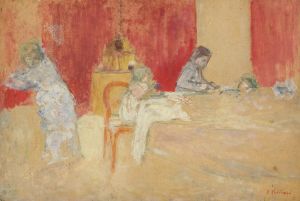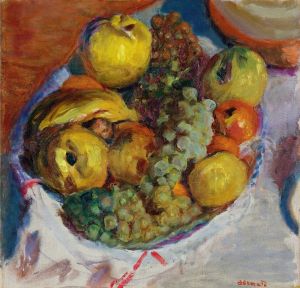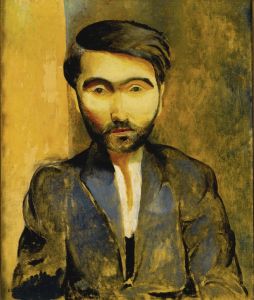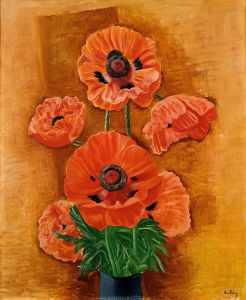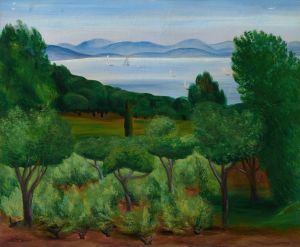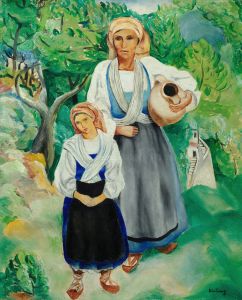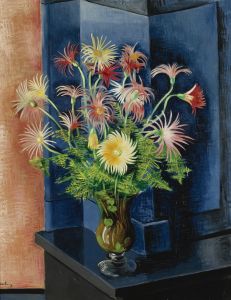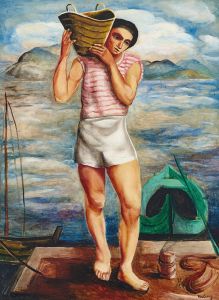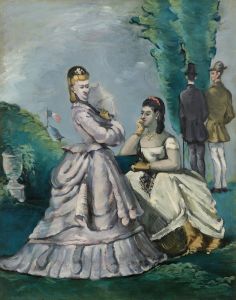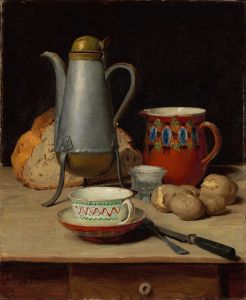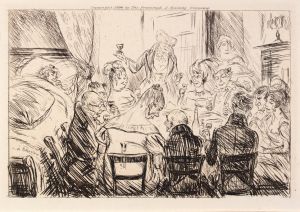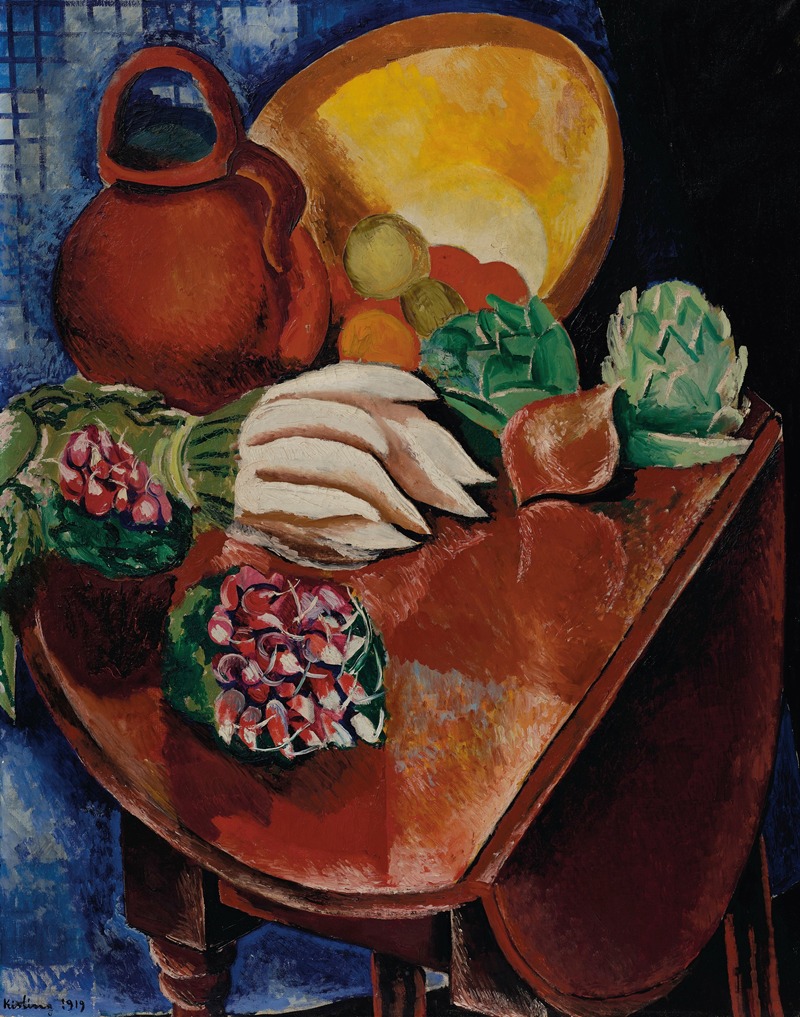
Ananas et pichet
A hand-painted replica of Moïse Kisling’s masterpiece Ananas et pichet, meticulously crafted by professional artists to capture the true essence of the original. Each piece is created with museum-quality canvas and rare mineral pigments, carefully painted by experienced artists with delicate brushstrokes and rich, layered colors to perfectly recreate the texture of the original artwork. Unlike machine-printed reproductions, this hand-painted version brings the painting to life, infused with the artist’s emotions and skill in every stroke. Whether for personal collection or home decoration, it instantly elevates the artistic atmosphere of any space.
Moïse Kisling, a Polish-born French painter, was a prominent figure in the early 20th-century art scene, particularly known for his contributions to the School of Paris. His painting "Ananas et pichet" is one of the many works that showcase his distinctive style, which often combined elements of realism with a modernist approach.
Kisling was born in Kraków, Poland, in 1891 and moved to Paris in 1910, where he became part of the vibrant artistic community in Montparnasse. This area was a hub for artists, writers, and intellectuals, and Kisling quickly became associated with other notable artists of the time, such as Amedeo Modigliani, Pablo Picasso, and Jules Pascin. His friendships and collaborations with these artists influenced his work, although he maintained a unique style that set him apart.
"Ananas et pichet," which translates to "Pineapple and Pitcher," is a still life painting, a genre that Kisling frequently explored. Still life paintings often focus on inanimate objects, and in this work, Kisling depicts a pineapple alongside a pitcher. The choice of objects in still life paintings can be symbolic or purely aesthetic, and Kisling's work often emphasized the beauty and form of the objects he painted.
Kisling's style is characterized by bold colors and a strong sense of composition. In "Ananas et pichet," these elements are evident in the way he uses color to bring out the textures of the pineapple and the reflective surfaces of the pitcher. His brushwork is meticulous, and he often employed a technique that gave his paintings a sense of depth and vibrancy. The use of light and shadow in the painting adds to the realism, while the composition reflects a modernist sensibility, balancing the objects in a way that draws the viewer's eye across the canvas.
Throughout his career, Kisling's work was well-received, and he exhibited in numerous galleries and salons. His paintings were particularly popular among collectors in France and the United States. Despite the disruptions caused by World War II, during which Kisling served in the French Foreign Legion, he continued to paint and remained active in the art world until his death in 1953.
Kisling's contribution to the art world extends beyond his paintings. He was part of a generation of artists who pushed the boundaries of traditional art forms and helped to shape the modernist movement. His works, including "Ananas et pichet," are celebrated for their technical skill and their ability to capture the essence of the objects he painted.
Today, Kisling's paintings are held in various private and public collections around the world. "Ananas et pichet" is a testament to his skill as a painter and his ability to infuse everyday objects with a sense of beauty and intrigue. His legacy continues to be appreciated by art enthusiasts and historians who recognize his role in the development of 20th-century art.





